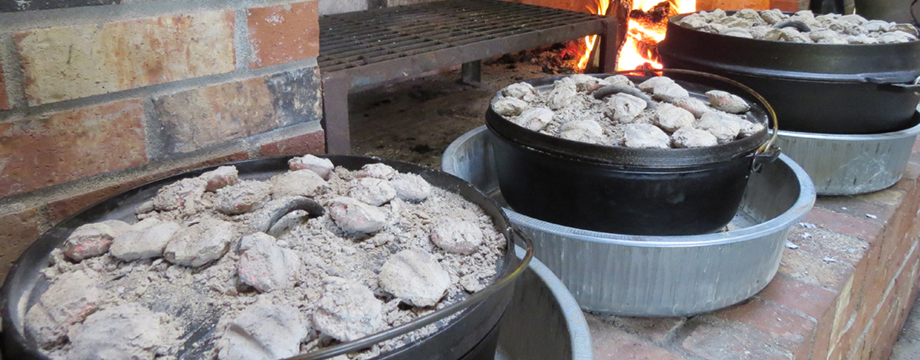From my earliest days of cooking, I learned how to thicken a sauce and how to make a white sauce. Did I know that I was making a roux or slurry? Did I know that a white sauce was called a béchamel? No. These were just things I learned how to do cooking alongside my mother, grandmother, and my friends’ mothers. How appropriate that here we are talking about mother sauces.
In cooking, there are a handful of sauces that are considered the foundations for many dishes and other sauces. These are called Mother Sauces. For example, the sauce you use to make macaroni and cheese starts with a roux that becomes a béchamel that turns into a mornay or cheddar sauce when you add Gruyère or Cheddar cheese.
But before we get into sauces, we need to start with thickeners. These are what give a sauce its body so that it coats and clings to food instead of running all over the plate. One way to thicken a sauce is by cooking down and reducing liquids like tomato sauce, which will naturally thicken as moisture evaporates, but most sauces need a little more help. A roux or a slurry are two ways to thicken a sauce.
A roux is made by whisking one part flour into one part fat (usually butter) until it forms a smooth paste. These will cook briefly to cook out the floury, pasty flavor in the flour. Some dishes will call for cooking the roux until it turns a dark, rich brown, which will bring a nutty, toasty flavor to the sauce. When liquid is added to the roux and everything comes to a boil, the flour-fat mixture will thicken the liquid, making a velvety sauce.
A slurry is a combination of starch (usually cornstarch, flour, potato starch or arrowroot) and cold water, which is mixed together and added to a soup or sauce to thicken it. Why cold water? If the starch is added directly to hot liquid, the starch granules cannot disperse easily and clumps form. When the slurry is added to the soup or sauce, the liquid must be brought up to a simmer to ensure the starch reaches its full thickening potential before more is added. Add a bit at a time until you reach the desired consistency. Cornstarch slurries are used a lot in Asian dishes.
Now, let’s move on to the mothers of all sauces. This is by no means a comprehensive list. Each type of cuisine has its foundations, but these are, for the most part, widely accepted as mother sauces and what every culinary student is expected to memorize.
Béchamel (bay-shah-mel)
Make a roux. Add milk gradually, whisking constantly. Bring to a boil and simmer for 30 minutes. Season with salt and pepper. Some will argue that you must use white pepper to keep the sauce white, but I actually prefer the flavor of black pepper in my white sauce. A béchamel is a base for many sauces, including the mornay and cheddar sauces, which are used to make macaroni and cheese. I use a béchamel when I make scalloped potatoes.
Espagnole (ehs-pah-nyol)
Start with a browned mirepoix. Add a brown roux, tomato paste, beef or veal stock, and a bouquet garni, which is a tied bundle of herbs, usually thyme, bay leaf, and sage, but could also include others. This sauce is sometimes used as the foundation for boeuf bourguinon and demi-glace.
Hollandaise (hol-uhn-dayz)
Emulsify white wine, egg yolks, and butter in a double boiler. Add lemon juice, salt, and white pepper. This is a very delicate sauce because the emulsion can easily break. A rich hollandaise is usually used as a dipping sauce for asparagus or a finishing sauce for dishes like eggs Benedict.
Tomato (toe-mah-toe)
Start with a soffritto. Add tomatoes and tomato puree. Simmer for 45 minutes until the tomatoes have cooked down into a thick sauce (you could also thicken this with a roux). Add basil, salt, and pepper.
Velouté (veh-loo-tay )
This may or may not start with a white mirepoix. Make a pale or blonde roux. Add a veal, chicken, or fish stock. It is usually served over fish or poultry that has been delicately cooked, like poaching or steaming.
These sauces are full of flavor and enhance whatever they’re served with. While some are used more than others, they are all versatile and provide solid building blocks for many other sauces. After all, they are all Mother Sauces and we need to respect our mothers.
If you like this blog and don’t want to miss a single post, subscribe to Chuck Wagoneer by clicking on the Follow Us button in the upper right corner and follow us on Facebook and Pinterest for the latest updates and more stuff!














Recent Comments